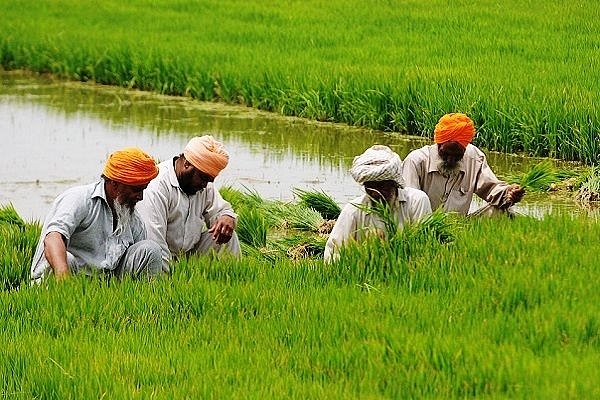
Agri Distress: Three Action Points For Short And Medium Term
Why the government must focus on short and medium term goals related to market infrastructure, income transfer and irrigation development to address the farm crisis.
Earlier this week, the nation saw close to a lakh farmers march to Delhi to demand for a joint session in Parliament to discuss the agriculture crisis. The march was organised by the All India Kisan Sangharsh Coordination Committee, a coalition of around 200 large and small farmer groups from around the country.
Their main demand was tabling of The Farmers’ Right to Guaranteed Remunerative Minimum Support Prices for Agricultural Commodities Bill, 2018. This is, perhaps, the second largest march in recent memory. We had seen a similar congregation in March last year by farmers from Maharashtra to demand loan waiver and minimum support prices (MSP).
With state and national elections around the corner, we are also seeing political parties promise loan waivers as part of their manifesto. There has been a number of loan waiver promises, kept and unkept over the last few years in Maharashtra, Uttar Pradesh, Karnataka, Tamil Nadu to name a few. MSP on the other hand has largely been an unkept promise, with governments lacking the administrative and financial capacity to pay the promised price to farmers on a timely basis.
The farm crisis in general is a multi-faceted problem ranging from poor infrastructure, inadequate credit access, limited or no insurance payouts, lack of access to irrigation, low farmer prices, low input access etc. To achieve the vision of doubling the farm incomes, the government must ideally need to address all the above problems while ensuring environment, market and fiscal prudence.
Policy approaches such as credit waivers reflect the short term thinking of political parties, to ensure quick wins during the election season, keeping the focus away from long term structural plans needed to address the farm crisis. One could, perhaps, start with three short to medium goals to address some of the pressing problems in agriculture.
Market infrastructure: Price discovery and price realisation have been two largely distinct issues in India. Due to large penetration of mobile phones, a farmer sitting in a remote village in India is able to access information around prices at various locations. However, it hasn’t necessarily translated into price realisation. Price realisation would require access to market infrastructure and adequate buyers willing to pay the necessary price.
According to food and agriculture policy specialist Devinder Sharma: “against the requirement of 42,000 agricultural produce market committee (APMC) mandis at a 5-kilometre radius, India only has about 7,600 mandis”. While the mandi network has to be expanded, what is also needed is an appropriate financial back-up to meet the price support. The government must look at partnership with farmer producer organisations and private sector actors to set up and run the mandis, given most of the current mandis are unable to get out of the hands of commission agents. The national electronic board would further need to support these mandis in logistics, quality insurance, technology upgrade to ensure buyers have the necessary confidence in purchasing from these mandis.
Income transfer: The markets for agricultural commodities have an inherent tendency to be rather volatile, the price volatility of these products has been particularly high in the last decade. More specifically, sharp increases in global food prices in 2007-2008 and 2010-2011 were followed by a large fall in prices.
As these changes in prices were unpredictable, price volatility has several negative consequences on farmers with small land holdings. Managing this volatility should be the primary concern of the government. One cannot think of doubling the incomes through current market price conditions, even if the farmers are able to access fair prices.
In such a scenario, income guarantee should be the necessary policy instrument for the government and not a mere handout. It is one of most effective instruments against global crashes in prices. Also, a fixed income approach could have other positive benefits like increased access to credit. Fixed income increases the confidence of banks to lend against the collateral and provide short to long-term loans to farmers, leading to increased demand and capital asset creation at the farm level.
Irrigation: The current input subsidy scheme by the government is hardly achieving its intended productivity targets due to a lack of access to irrigation. Good seeds and fertilisers fail to achieve their full potential if plants are not optimally watered. With close to 60 per cent farms dependent on rain, the average productivity of the farms in India is way below the global average. Irrigation development has been fraught with problems due to limitation of funds, land acquisition and faulty implementation.
The government must re-look at its irrigation strategy by allotting more funds towards irrigation infrastructure development vis a vis input subsidy schemes, providing incentives to increase adoption of technologies such as drip and sprinkler irrigation systems and promoting nutrient rich and low water use crops like millets.
The above suggestion, while not comprehensive, can certainly go a long way in aiding some of the problems ailing the agriculture sector in India.